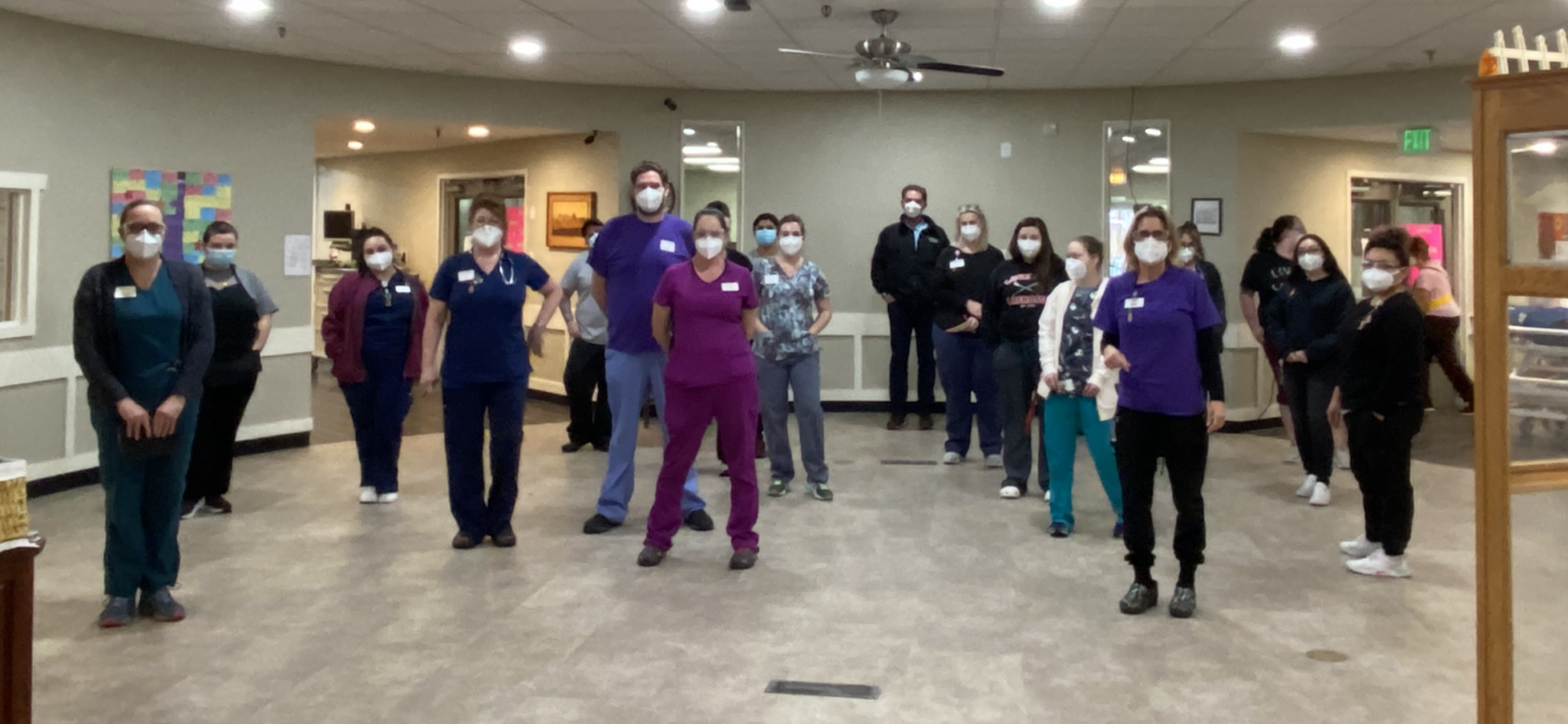
Employees at the Rehabilitation and Nursing Center of the Rockies in Fort Collins were among the health-care professionals and social workers who received the hand-shaped medals.
Story by Shelby Skumanich
Undergraduate and graduate art students majoring in metalsmithing and jewelry at Colorado State University recently participated in the Hand Medal Project, a global outreach effort to give medals in the shape of a hand to the health-care professionals and social workers who have put themselves at risk while caring for others during the COVID-19 pandemic.
Haley Bates, associate professor of metalsmithing and jewelry, served in the role of the “hand keeper” for the medals the CSU students made. She gave them to the “hand giver,” Sara Case, director of nursing at the Rehabilitation and Nursing Center of the Rockies, to distribute the medals to recipients there and at the Fort Collins Rescue Mission.
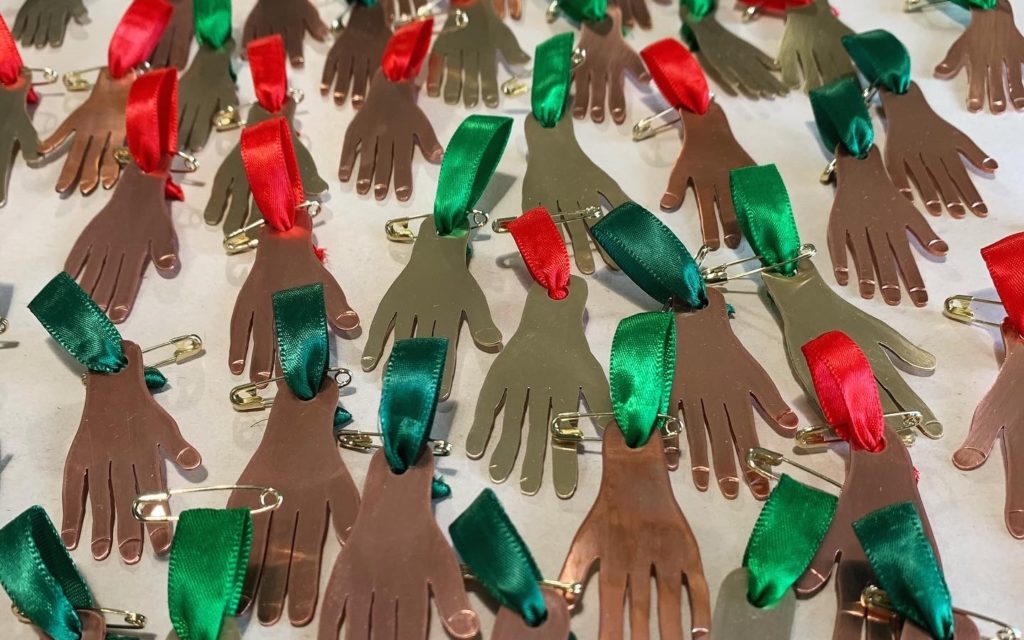
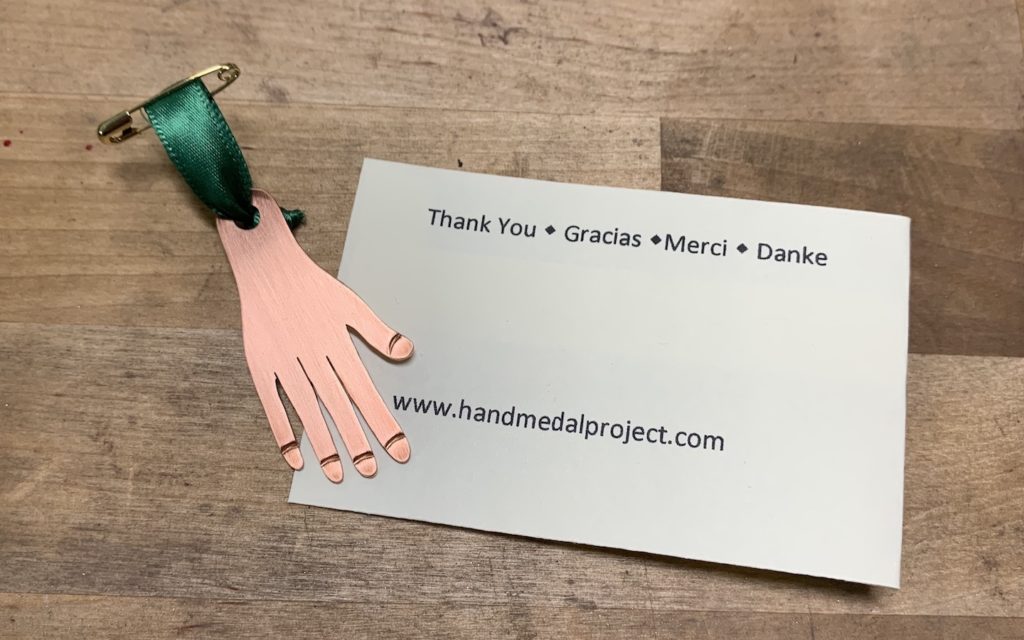
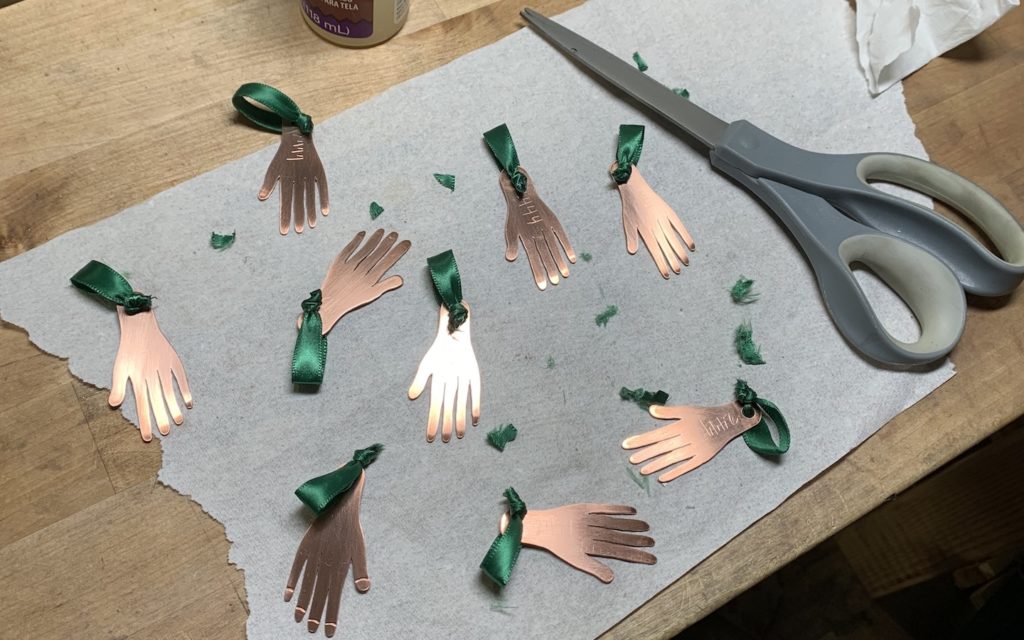
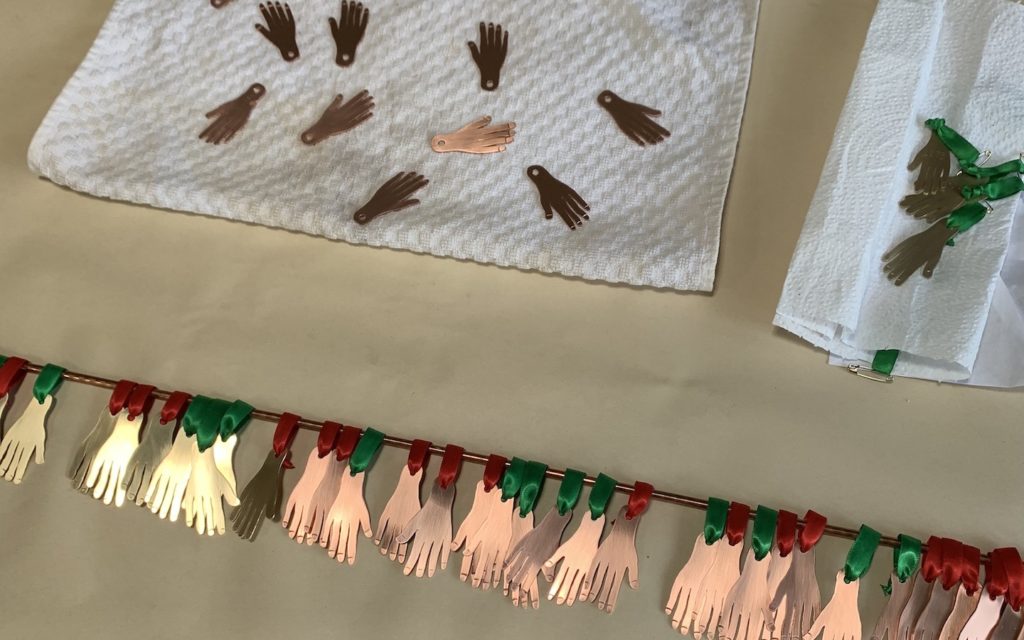
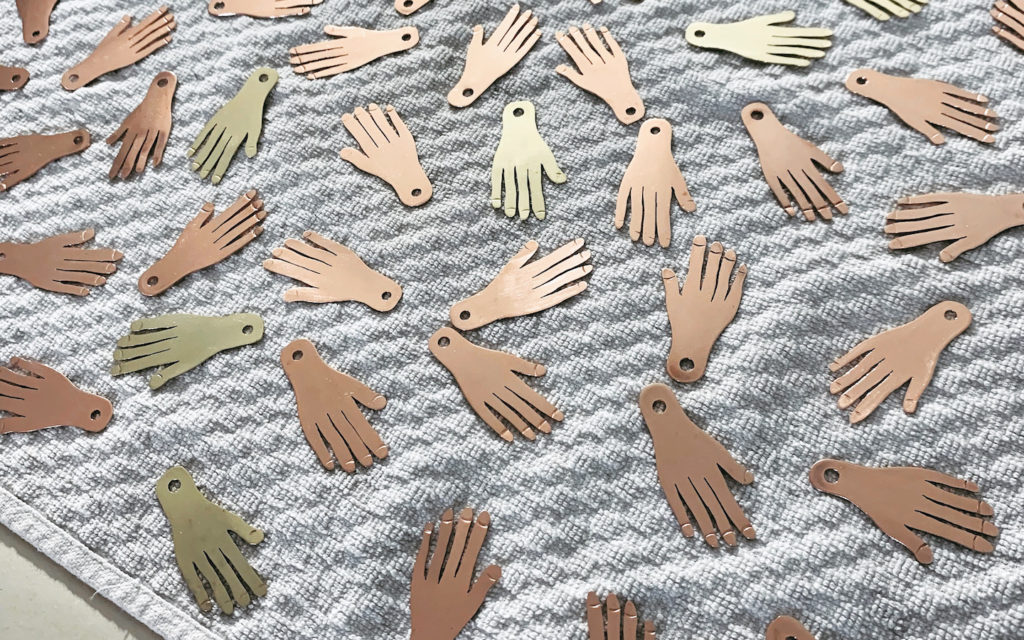
“I first heard about this project back in early April, when the pandemic was starting to really hit home,” Bates says of her interest in the project. “CSU students were not returning from Spring Break, and it became obvious that fall classes would be impacted as well. I decided early on that I wanted to have my students participate, primarily as a way to show support to our local community caregivers, and for my students to directly experience the powerful role that jewelry can play in fostering communication and connection.”
About the initiative
Originally conceived by friends and artists Iris Eichenberg and Jimena Ríos, the project was inspired by “ex-votos,” handheld objects of devotion that honor a gratitude or a wish. The aim of the project is “for artists, jewelers, students, and professionals to craft medals that will honor the service and sacrifice of health workers,” according to a press release on the project. The Hand Medal Project has 3,000 jewelers participating in 66 countries, and so far more than 50,000 medals have been made.
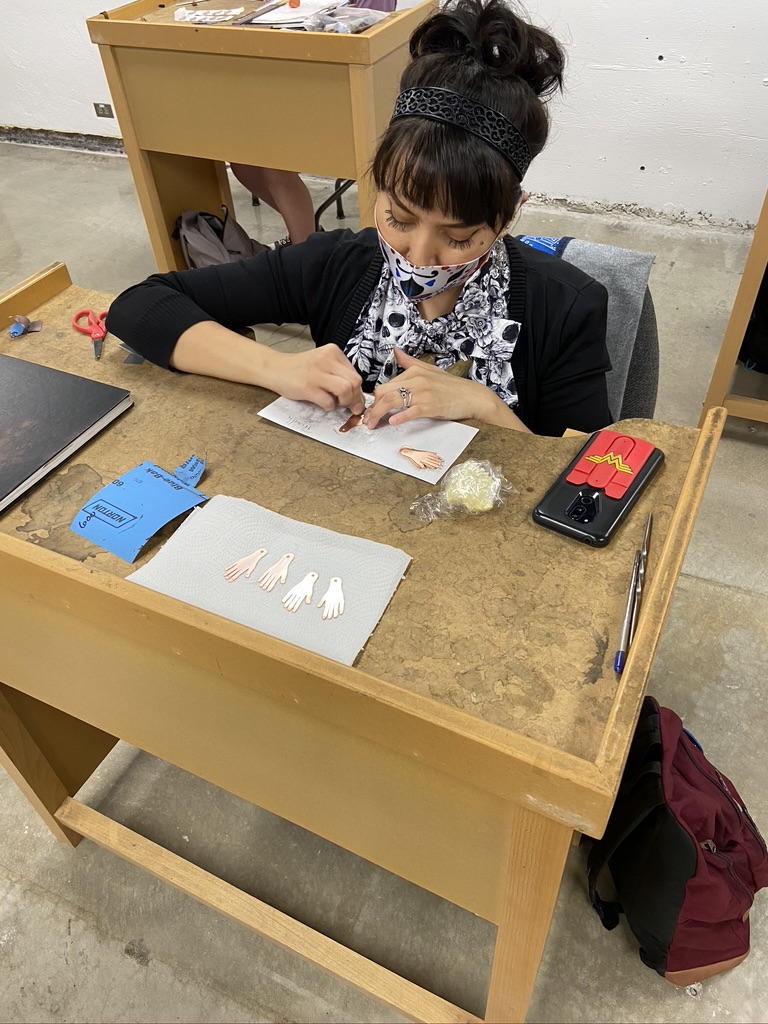
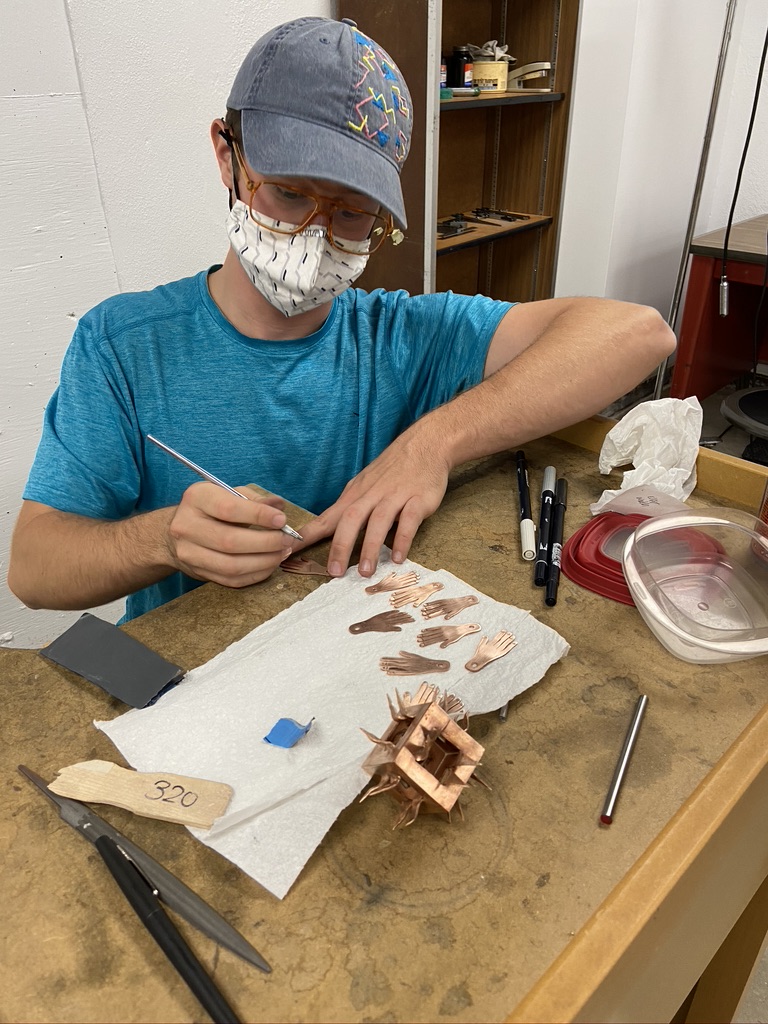
“This project, in this moment, centers not on what can be created,” the press release states, “but on what can be done with the act of creation in service to others. It’s within the acts of the hand — the offer and the receipt — that the Hand Medal Project takes place.”
A network of 145 people, what the organizers call “hand keepers,” collected the medals from jewelers throughout the participating countries. Hand keepers then reached out to health-care institutions within their local communities to collaborate with nurses and other front-line medical and social workers who agreed to take on the role of “hand giver.” The medals were then passed on to the hand givers, who presented them to the health–care workers and staff within their particular organizations. The project has been collecting medals since April.
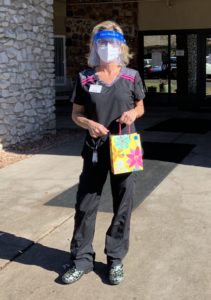
“This project was given to students at all levels in the program,” Bates says of her students’ participation in the project. “For some, it was their very first time picking up a jeweler’s saw and learning how to cut, file and finish metal.”
She adds, “Each student was asked to make between seven and 10 medals. It was a challenging project for the beginners, but also a very gratifying one for the students to take on, regardless of their experience level.”
In addition to giving the medals, the project also aims to map where the medals go using the same graphic language that the health organizations, governments and media have used to track the velocity of the virus. By mapping global connections between countries, artists and health-care workers, and tracking the spread of gratitude, it counters the narrative of division and paranoia that’s been present the past eight months.
“This was a very special gift for me to present to my staff on Nov. 8,” Case said. “Emotions were high, some tears shed. The long-term care unit does not get thanks very often. For our residents whom we call family, we work hard and love hard every day. COVID has brought this to a whole new level.”
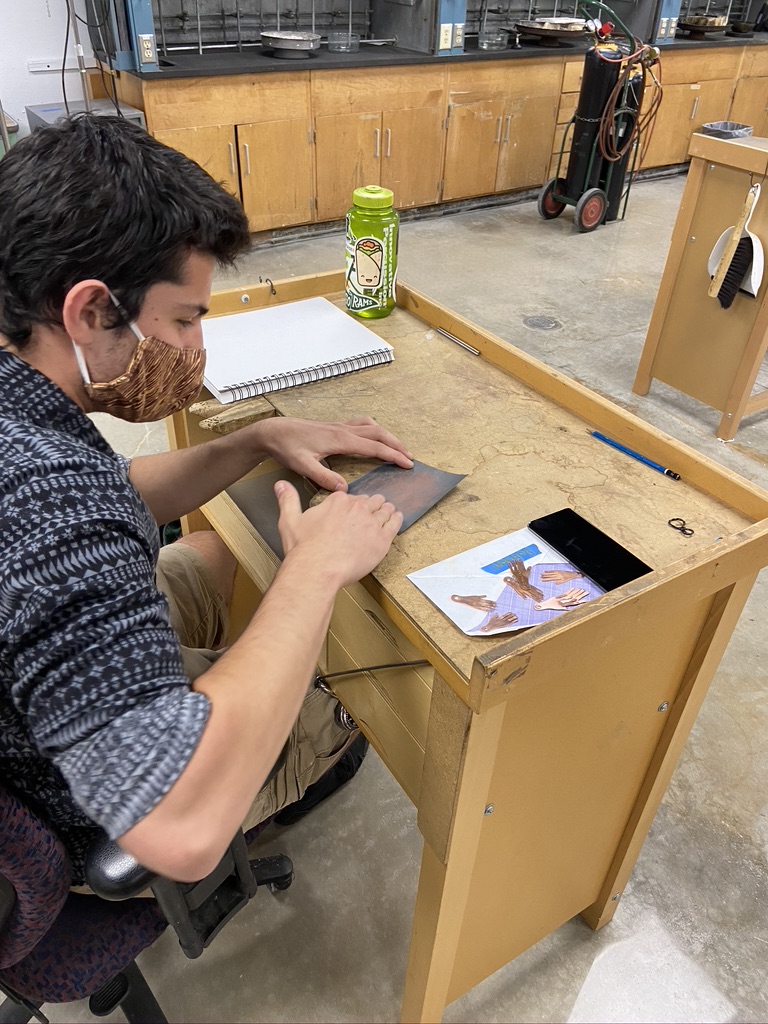
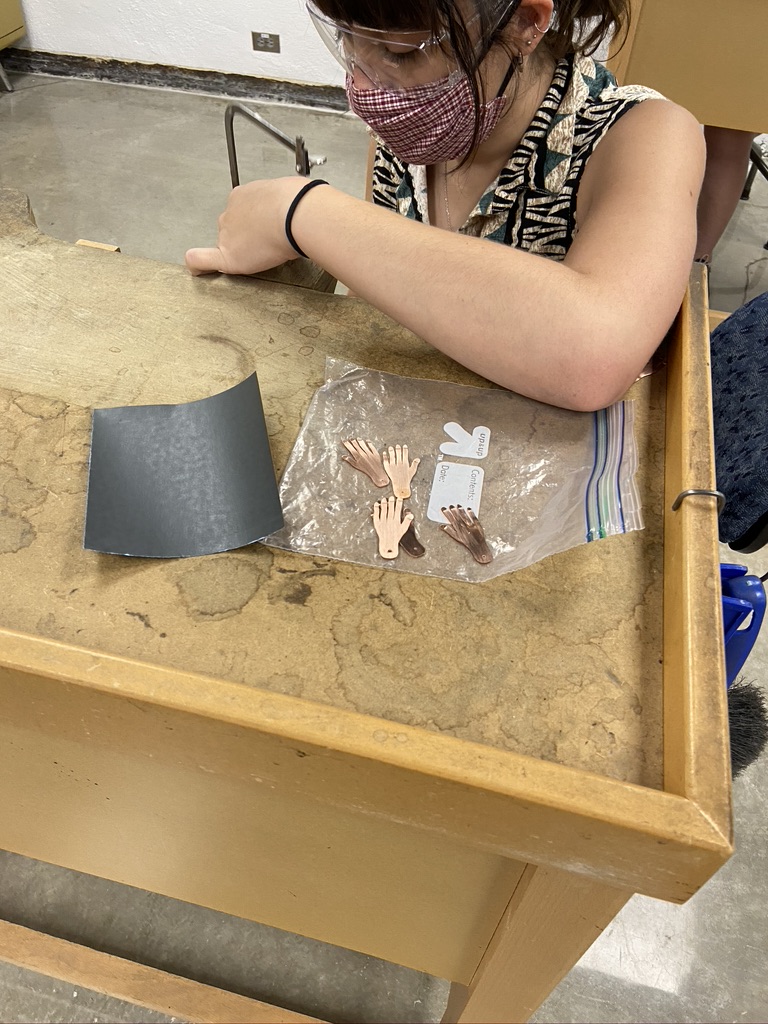
“It is really rewarding to us as a department dedicated to the visual arts to be able to show health-care workers how important and appreciated their efforts are,” says Eleanor Moseman, chair of the Department of Art and Art History. “Art has a way of connecting people, and social connection is so hard to create in this pandemic. We are proud of the work that Professor Bates and her students are doing to lift up those who have been holding the rest of us through this health crisis. It’s quite inspiring!”
Hand symbolism
The medal’s simple design is a reflection of the powerful symbol of hands during the pandemic. They can be a symbol of sickness, something that needs to be washed and sanitized, but also a symbol of healing, by offering comfort, care and connection. To further emphasize the importance of connection and community during this time of distancing, each medal has been registered with a number stamped on the back, which allows recipients to look up the maker of their medal on the project’s website.